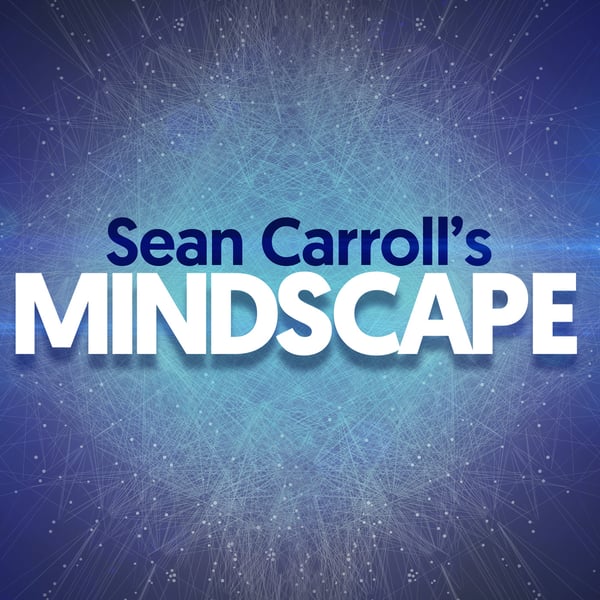179 | David Reich on Genetics and Ancient Humanity
Sean Carroll's Mindscape: Science, Society, Philosophy, Culture, Arts, and Ideas
Sean Carroll | Wondery
4.8 • 4.4K Ratings
🗓️ 10 January 2022
⏱️ 73 minutes
🧾️ Download transcript
Summary
Human beings like to divide themselves into groups, and then cooperate, socialize, and reproduce with members of their own group. But they’re not very absolutist about it; groups tend to gradually (or suddenly) intermingle, as people explore, intermarry, or conquer each other. David Reich has pioneered the use of genetic data in uncovering the history of ancient humanity: what groups existed where and when, and how they interacted. The result is a picture of churning populations in constant flux, including “ghost populations” that no longer exist today.
Support Mindscape on Patreon.
David Reich received his Ph.D. in zoology from the University of Oxford. He is currently a professor of genetics at Harvard Medical School. Among his awards are the Dan David Prize, the National Academy of Sciences Award in Molecular Biology, the Wiley Prize, the Darwin-Wallace Medal, and the Massry Prize. He is the author of Who We Are and How We Got Here: Ancient DNA and the New Science of the Human Past.
See Privacy Policy at https://art19.com/privacy and California Privacy Notice at https://art19.com/privacy#do-not-sell-my-info.
Transcript
Click on a timestamp to play from that location
| 0:00.0 | Hello everyone, welcome to the Mindscape Podcast. I'm your host Sean Carroll. We talked about DNA |
| 0:05.2 | and genomes here on the podcast quite a bit. There's a lot of information locked up in our DNA, |
| 0:11.4 | both information about how we as organisms or other organisms function right in the here and now, |
| 0:17.6 | but also this information about our history. Remember a few months ago we talked with |
| 0:21.7 | Betul Kachar about paleo genomics, learning about very, very early life by looking at the current |
| 0:29.2 | genomes of different organisms and seeing what they have in common. But if you want to look at |
| 0:34.5 | human history, you're talking about thousands or hundreds of thousands of years ago, |
| 0:38.8 | not billions of years ago, and that gives you a different thing that you can do. You can |
| 0:43.9 | look at the actual DNA of the actual humans from tens of thousands or hundreds of thousands |
| 0:49.7 | of years ago. Can't do that if you're looking a billion years ago, there's no DNA left from a |
| 0:54.4 | billion years ago. So this is a new field of science that has really exploded in the past decade or |
| 1:00.6 | two, learning about ancient human history by looking at the actual genomes from skeletons and |
| 1:06.8 | fossils of real human beings who lived back then. And today's guest David Reich is one of the world's |
| 1:12.4 | leaders in this field. He's made many discoveries along these lines in his lab. Perhaps most |
| 1:18.8 | provocatively, he's one of the people who discovered the fact that there is Neanderthal DNA in most |
| 1:25.5 | human beings today, other than Africans, other than people whose ancestors have been in Africa the |
| 1:32.2 | whole time, most other human beings have a tiny amount of Neanderthal DNA mixed in. So this tells |
| 1:38.8 | you something since Neanderthals were Europeans and Asians predominantly, and human beings, |
| 1:45.1 | homo sapiens came out of Africa, what this means is that when the humans came out of Africa, |
| 1:50.4 | they got it on with some Neanderthals, right? They mixed up the gene pools a little bit, |
| 1:55.2 | and that kind of analysis can be done at many layers in many different times, and we learn a lot, |
| 2:00.8 | a lot of surprising discoveries have been made. I don't want to give away all the surprising |
... |
Please login to see the full transcript.
Disclaimer: The podcast and artwork embedded on this page are from Sean Carroll | Wondery, and are the property of its owner and not affiliated with or endorsed by Tapesearch.
Generated transcripts are the property of Sean Carroll | Wondery and are distributed freely under the Fair Use doctrine. Transcripts generated by Tapesearch are not guaranteed to be accurate.
Copyright © Tapesearch 2025.

